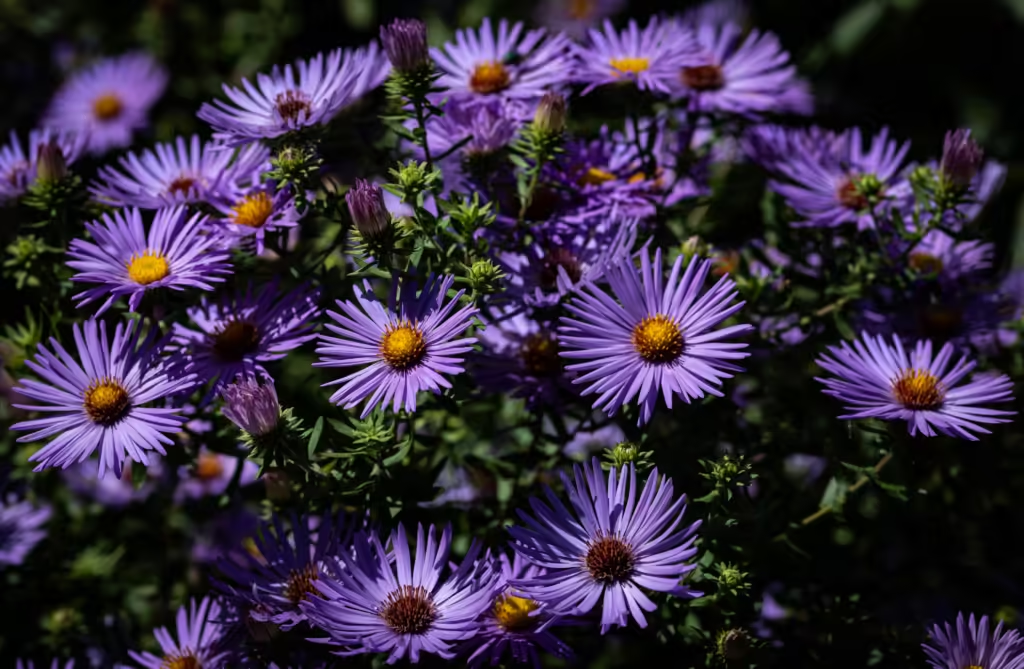
Saving aster seeds from your garden allows you to enjoy these vibrant flowers year after year while saving on costs and preserving your favorite varieties. Known for their daisy-like appearance and bright colors, asters attract pollinators such as butterflies and bees, adding a pop of color to late-summer and fall gardens. By saving seeds from healthy aster plants, you’re not only promoting biodiversity but also creating a sustainable gardening practice that benefits both your landscape and local wildlife.
Why Save Aster Seeds?
Asters are perennials that can reseed themselves naturally, but collecting and saving seeds ensures you can replant them where and when you want. By saving seeds from the healthiest plants in your garden, you’re selecting for resilience, beauty, and growth habits that fit well in your landscape. Additionally, seed-saving lets you control how densely you plant asters, which can help prevent overcrowding and promote stronger growth in your garden beds.
Saving aster seeds also gives you the opportunity to share seeds with other gardeners or expand your collection by trading seeds with friends. This practice fosters community among gardeners and helps spread native or adapted plants in your local area. Many varieties of asters, particularly native species, play an essential role in supporting pollinators, making your seed-saving efforts beneficial to the broader ecosystem.
Harvesting Seeds from Your Aster Plants
When it comes to saving aster seeds, timing is essential. Aster seeds mature in the flower heads as the blooms fade and dry out. To ensure you collect viable seeds, wait until the flowers are fully dry and the petals begin to wilt and fall off. This stage signals that the seeds inside the flower head have matured, providing the best chance for successful germination next season.
As the flower heads dry, they turn brown and begin to develop a fluffy texture. These fluffy fibers contain the seeds and allow them to disperse naturally in the wild. To collect aster seeds, gently remove the dried flower heads from the plant, taking care to gather as many intact seed heads as possible. Avoid picking flowers that are still vibrant or have any green color, as these may not have fully developed seeds. By choosing only mature, dried flowers, you’re ensuring that your saved seeds have the greatest potential to grow healthy plants in the future.
Drying Aster Seeds for Longevity
Proper drying is a key part of saving aster seeds, as any residual moisture can lead to mold or rot during storage. Once you’ve gathered your dried flower heads, place them in a well-ventilated, dry area to ensure thorough drying. A paper towel, tray, or mesh screen works well as a drying surface, as they allow for air circulation around the seeds. Spread the flower heads in a single layer and keep them in a location free from direct sunlight, as too much heat can damage the seeds.
After allowing the heads to dry for a few days, you can gently break them apart to separate the seeds from the fluff and other plant material. Each aster seed is small and brown, attached to a lightweight chaff that aids in natural dispersal. Carefully removing this chaff helps make the seeds easier to store and plant later. Taking time to dry your seeds completely not only helps maintain their quality but also ensures they’ll be ready to plant when spring arrives.
Storing Aster Seeds
After drying, storing your aster seeds properly ensures they remain viable and ready for planting next season. Seed envelopes are a simple, affordable choice for storage that protects seeds from moisture while allowing some airflow. Paper envelopes are ideal because they prevent humidity buildup, which could damage seeds during long-term storage. Place your dried aster seeds in a labeled seed envelope, noting the variety and the date of collection. This labeling helps you keep track of your seed collection and plan your garden effectively.
For optimal preservation, place your seed envelopes in an airtight container. Glass jars, metal tins with tight lids, or high-quality plastic containers with seals work well to keep out moisture and air, both of which can reduce seed longevity.
To further safeguard your aster seeds, consider adding a silica gel packet to your airtight container. Silica gel packets are commonly used to absorb moisture and create a dry environment, making them ideal for seed storage. Including a silica packet helps maintain the low humidity levels needed to keep seeds fresh and viable.
Happy Seed Saving!
Saving aster seeds is a rewarding way to preserve the beauty of your garden and support local pollinators. By carefully harvesting, drying, and storing seeds in seed envelopes, placing them in an airtight container, and adding a silica packet, you’re ensuring they stay viable until planting time next year. This simple practice not only benefits your garden but also contributes to a sustainable gardening approach that promotes biodiversity and resilience. With a little care, you’ll enjoy the stunning blooms of asters season after season.
Please be sure to check out my Gardening Blog Post Page for more tips on all types of gardening. Including Seed Saving, Seed Starting, Orchids, Water Gardening, Coldframe Gardening, Indoor Bulb Gardening, Hydroponics, Container Gardening, Mums, Herbs, African Violets, planting Bulbs, Flower Gardening, Vegetable and Fruit Gardening, Indoor Houseplants of all kinds, Cactus, Succulents, Hanging plants, Deer resistant plants and even Bird, Bee, Butterfly and Hummingbird Gardens!
